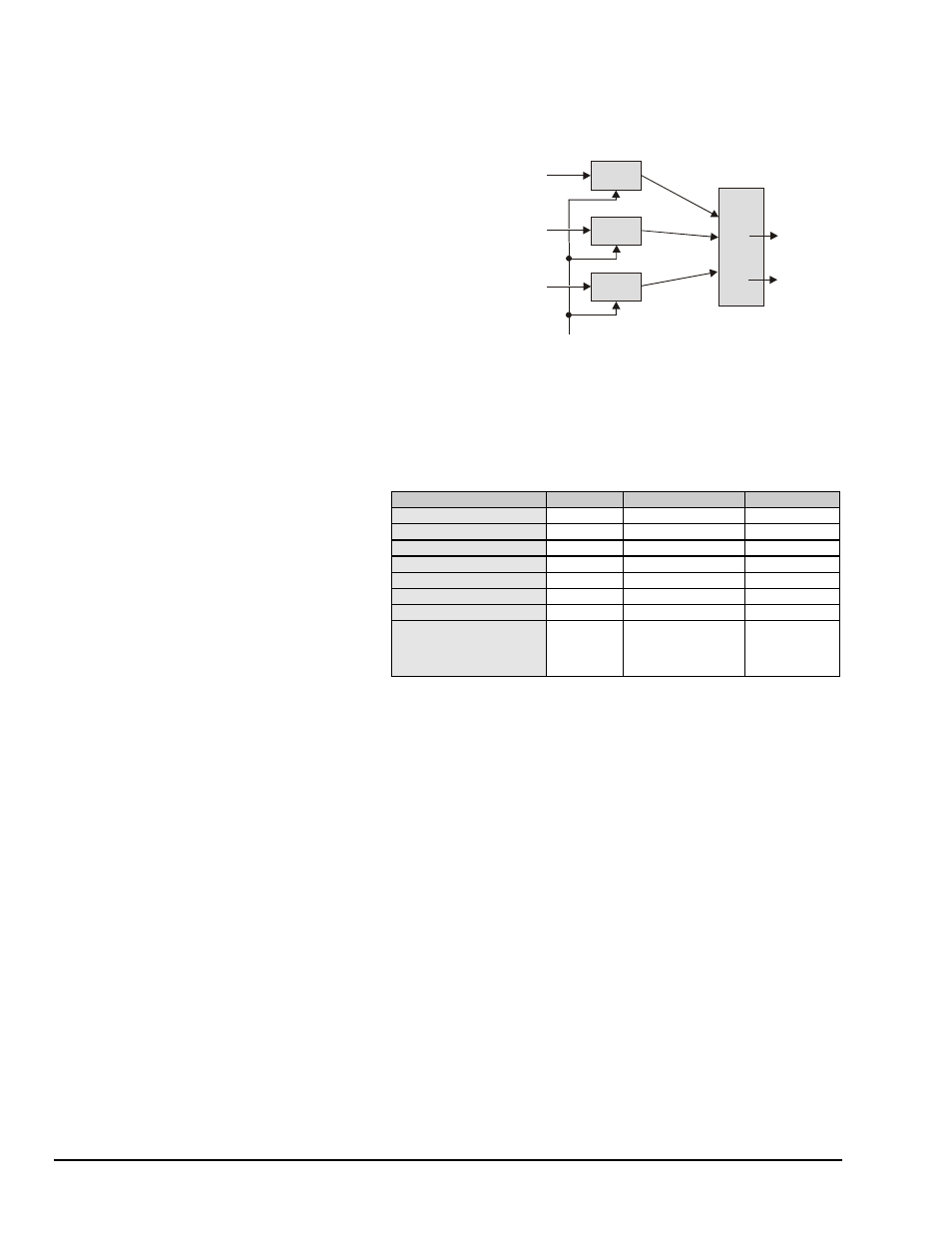Multi-channel trigger, Multi-channel trigger types, Igger…… 8-12 – Measurement Computing WaveBook rev.3.0 User Manual
Page 146

8-12 Theory of Operation,
6-24-99
WaveBook User’s Manual
Multi-Channel Trigger
When the small hardware-limited latencies of the digital (TTL) and single-channel (Channel 1 analog)
triggers are not required, the DSP chip may be used to examine the samples from one or more channels and
to decide if they constitute a pre-defined trigger condition.
The DSP can sample up to 72 input channels and
examine each one to determine if it meets
programmed levels for a valid trigger. This multi-
channel triggering is a two-step process:
1. The DSP examines each of its specified input
signals to determine trigger validity.
2. After all of the channels have been examined, the
DSP logically combines the individual triggers to
generate the actual trigger. The DSP may be
programmed to generate a trigger if any
individual trigger is valid (OR) or if all triggers
are valid (AND). See figure.
Trigger
Detector
Trigger
Detector
Analog
Input
Signals
Invalid Trigger
Valid Trigger
Valid Trigger
Re-Arm Command
From Control Circuits
No Trigger
AND
(all)
Trigger
OR
(any)
Trigger
Logic
Trigger
Detector
Multi-Channel Trigger Detection
Trigger validity in a multi-channel environment is determined by the logical relationship among three
elements (slope, duration, and initialization) as discussed in the next section.
Multi-Channel Trigger Types
Trigger Type
Slope
Duration
Initialization
Above-level
Rising
Instantaneous
Level
Below-level
Falling
Instantaneous
Level
Above-level-with-latch
Rising
Latched
Level
Below-level-with-latch
Falling
Latched
Level
Rising-edge
Rising
Instantaneous
Edge
Falling-edge
Falling
Instantaneous
Edge
Rising-edge-with-latch
Rising
Latched
Edge
The first step in multi-channel
triggering is to examine the input
signals. To determine trigger
validity, WaveBook can examine
each input signal in 1 of 8 ways.
Note: Each trigger type is a
combination of three
elements: slope, duration,
and initialization.
Falling-edge-with-latch
Falling
Latched
Edge
Slope (above/rising or below/falling) sets whether the trigger is valid when the signal is:
• Above the trigger level (rising)
• Below the trigger level (falling).
Duration (instantaneous or latched) specifies the action to take if the signal level becomes invalid after it
has been valid:
• Instantaneous triggers become invalid as soon as the signal does; they are used to trigger on the
coincidence of signals, when two or more signals are simultaneously valid.
• Latched triggers remain valid until the acquisition is complete; they are used to trigger on the
occurrence of signals, when two or more signals have already become valid.
The trigger duration only makes a difference in multi-channel "AND" triggering. In multi-channel "OR"
triggering, WaveBook will be triggered as soon as any channel becomes valid; what happens when a
channel becomes invalid does not matter. In contrast, "AND" triggering waits for all of the triggers to be
valid; and so, latching can be important for rapidly changing signals.
Initialization (level or edge) specifies the sequence necessary for a signal to be a valid trigger:
• Level triggers become valid as soon as they reach or exceed the trigger level, even if they are already
past the trigger level when the acquisition is started.
• Edge triggers first wait until the signal level is invalid. Then they wait for the signal to reach the
trigger level before becoming valid. Thus, level triggers look for a signal level, whenever it occurs;
and edge triggers look for a rising or falling transition that reaches the trigger level.
Examination of the input signals compares two specified signal levels: (a) The trigger level determines
when the input channel is a valid trigger, and (b) the hysteresis is the amount by which the channel must
differ from the trigger level for the channel to become invalid.
